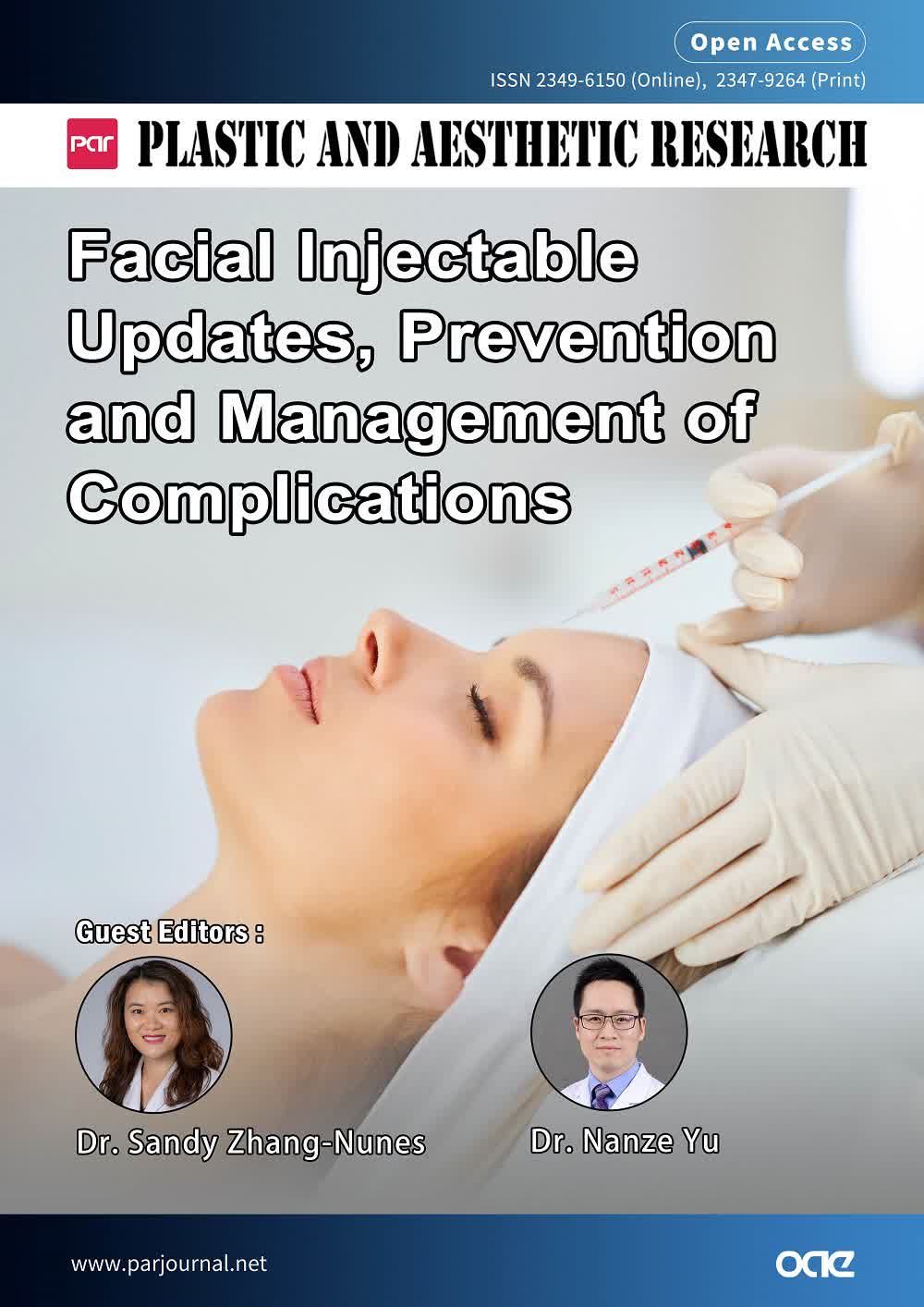
Topic: Facial Injectable Updates, Prevention and Management of Complications
A Special Issue of Plastic and Aesthetic Research
ISSN 2349-6150 (Online) 2347-9264 (Print)
Submission deadline: 20 Sep 2023
Guest Editor(s)
Special Issue Introduction
Neuromodulator is used to modify muscle action: reduce wrinkles and even deal with medical issues such as double vision. Its first use was by an ophthalmologist Alan Scott for strabismus. It is also used in other medical treatments, including blepharospasm, pelvic pain, vocal spasms, and hyperhidrosis. Neuromodulator injections have become the most common cosmetic procedure worldwide, with approximately 6.3 million injections performed each year. The global botulinum toxin market is projected to grow from $6.50 billion in 2022 to $9.09 billion by 2029. This increased usage has also led to concerns about their adverse effects, which can occur when the neuromodulator spreads beyond its intended target. These complications range from ptosis, limb weakness, and dysphagia to generalized paralysis, loss of bladder control, and life-threatening respiratory depression. In 2009, the United States Federal Drug Administration required manufacturers to label neuromodulators with a black box warning for potential botulism-like symptoms.
Dermal fillers are also popular for their ability to correct dermal contour abnormalities, including scarring and age-related fat loss, with approximately 4.3 million hyaluronic acid filler injections performed annually worldwide. There is a wide variety of filler types offered, including hyaluronic acid gel, fat, microfat, nanofat, calcium hydroxyapatite, platelet-rich plasma, and poly-L-lactic acid. Complications caused by these fillers can be broadly divided into nonischemic and ischemic. Nonischemic complications include nodules, biofilms, and granulomas, while ischemic complications include skin necrosis, vision loss, and cerebral infarctions. Prompt management is necessary to prevent permanent effects.
Therefore, a thorough knowledge of the various neuromodulators and fillers, their potential complications, and proper prevention and management is of significant importance. In this issue, we aim to collate studies that offer tips on the prevention and management of such complications.
Dermal fillers are also popular for their ability to correct dermal contour abnormalities, including scarring and age-related fat loss, with approximately 4.3 million hyaluronic acid filler injections performed annually worldwide. There is a wide variety of filler types offered, including hyaluronic acid gel, fat, microfat, nanofat, calcium hydroxyapatite, platelet-rich plasma, and poly-L-lactic acid. Complications caused by these fillers can be broadly divided into nonischemic and ischemic. Nonischemic complications include nodules, biofilms, and granulomas, while ischemic complications include skin necrosis, vision loss, and cerebral infarctions. Prompt management is necessary to prevent permanent effects.
Therefore, a thorough knowledge of the various neuromodulators and fillers, their potential complications, and proper prevention and management is of significant importance. In this issue, we aim to collate studies that offer tips on the prevention and management of such complications.
Submission Deadline
20 Sep 2023
Submission Information
For Author Instructions, please refer to https://www.oaepublish.com/par/author_instructions
For Online Submission, please login at https://oaemesas.com/login?JournalId=par?IssueId=PAR230404
Submission Deadline: 20 Sep 2023
Contacts: Frida Wang, Assistant Editor, Frida@parjournal.net




